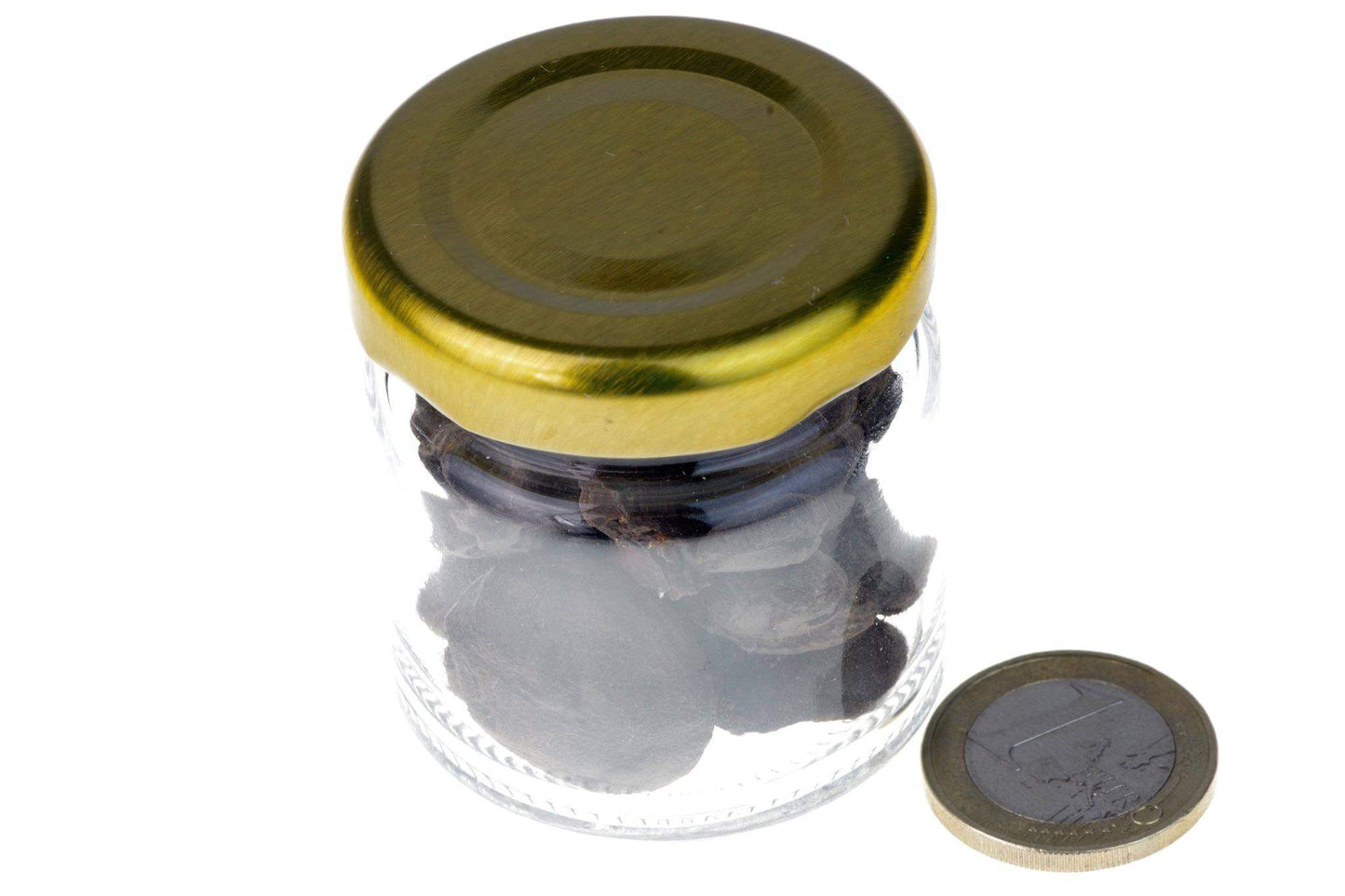www.Crystals.eu
Brachiopoda – Bottled
Brachiopoda – Bottled
Couldn't load pickup availability
Brachiopods, also known as Brachiopoda, are a phylum of marine animals that have hard "valves" (shells) on the upper and lower surfaces. Unlike bivalve mollusks, whose shells are symmetrical on either side, brachiopods are symmetrical from front to back.
Here's a more detailed overview of Brachiopoda:
Characteristics:
- Valves: Brachiopods have two valves that are typically different in shape and size, one dorsal (upper) and one ventral (lower). These valves are hinged at the rear end, and muscles inside the shell open and close them.
- Symmetry: They are distinguished by having bilateral symmetry across a plane passing through the animal, whereas bivalve mollusks are symmetrical across a plane dividing them into two equal halves.
- Lophophore: Brachiopods have a specialized feeding organ called a lophophore, which is a ring of ciliated tentacles that surround the mouth. The lophophore filters small particles of food from the water.
- Attachment: Most brachiopods attach to the substrate by a stalk-like structure called a pedicle.
- Habitat: They are mostly found in cold and low-light marine environments.
Classification and Evolution:
- Extant Groups: There are over 400 extant species of brachiopods, mostly grouped into two main classes: Inarticulata (without tooth and socket hinge) and Articulata (with tooth and socket hinge).
- Fossil Record: Brachiopods are well-represented in the fossil record, especially from the Paleozoic Era, where they were much more numerous and diverse. The fossil record of brachiopods dates back as far as the early Cambrian period, around 540 million years ago.
- Evolutionary Significance: The extensive fossil record allows scientists to study their evolutionary trends and the environmental factors that influenced their development and distribution.
Ecology:
- Diet: Brachiopods are filter feeders, capturing tiny organisms and particles of organic matter from the water column.
- Predators: They are preyed upon by starfish, fish, and other marine predators.
- Environmental Role: Brachiopods are indicators of environmental health, particularly in regard to water quality and temperature.
Conclusion:
Brachiopods are fascinating creatures that have existed for over half a billion years. Though they may look similar to bivalve mollusks, their unique symmetry and internal structure set them apart. They provide important insights into evolutionary biology and serve as valuable indicators of environmental conditions in marine ecosystems. If you are interested in paleontology, marine biology, or just the rich diversity of life on Earth, brachiopods offer a captivating glimpse into the complexity and beauty of the natural world.
Crystal and gemstone meanings, Detailed Brachiopoda properties
Share



















